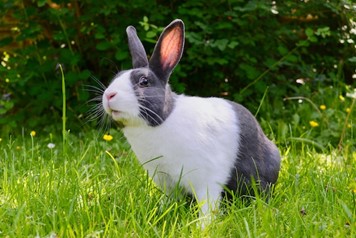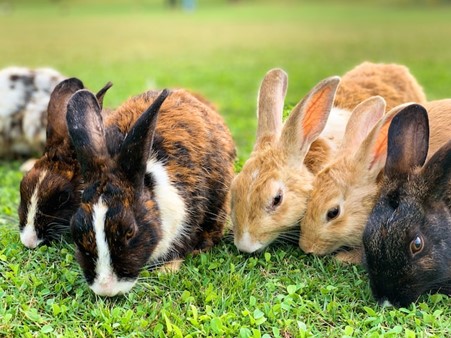Cynthia Maro of Pittsburgh is a veterinarian deeply committed to the health and welfare of pets, whether they be large, small, furry, or scaley. In the following article, Cynthia Maro sheds light on Rabbit Hemorrhagic Disease Virus 2, a pressing concern that affects pet bunnies worldwide, as well as sharing how bunny parents can secure a safer future for their beloved pets.
Rabbit owners know that bunnies are just as lovable and affectionate pets as cats and dogs. However, their healthcare and maintenance differs greatly.
RHDV2 is the virus known as Rabbit Hemorrhagic Disease Virus Type 2. It is the first virus requiring a vaccine in bunnies due to its high fatality rate of 70-100%, as well as the lack of signs and symptoms to indicate its presence. Rabbit owners should be on the lookout for loss of appetite, fever, lethargy, and difficulty breathing. All bunnies should be vaccinated at 30 days of age to best prevent them from getting the disease.
Below, Cynthia Maro of Pittsburgh explains more about the virus and how best to protect your beloved pet.
Cynthia Maro of Pittsburgh Explains RHDV2
Rabbit Hemorrhagic Disease Virus Type 2 (RHDV2) is a relatively novel disease affecting bunnies. The first reported case of the virus was in France in 2010. Since its discovery, it has become the dominant strain of the virus, and the first disease affecting rabbits that requires a vaccine.
Cynthia Maro of Pittsburgh explains that the first cases reported in the United States occurred in 2018 in Ohio and Washington. Today, it has become a global issue. Luckily, it doesn’t pose any health risk to humans or other species.
How Does RHDV2 Affect Rabbits
The virus primarily targets liver cells, causing severe hemorrhaging and tissue death as it spreads through the body. As it enters the bloodstream and travels from the liver, it also damages other organs in the body, namely the heart and lungs.
Cynthia Maro of Pittsburgh says that the virus also causes metabolic imbalances, blood clotting disorders that lead to uncontrolled internal bleeding, and neurological symptoms (such as walking in circles). Some bunnies also end up with nephrosis, which is when the filtering process of the kidneys becomes damaged, causing them to excrete excessive amounts of protein from the urine.
Symptoms and Diagnosis
Unfortunately, rabbits with RHDV2 often die within 48-72 hours of contracting the disease, and symptoms often go unnoticed or are completely absent. Rabbit owners should be on the lookout for sudden behavioral changes such as fever, lethargy, lack of appetite, difficulty breathing, and blue-tinged gums, reports Cynthia Maro of Pittsburgh.
The only way to achieve a positive diagnosis of RHDV2 is through post-mortem liver samples or RT-qPCR and ELISA tests.
Mortality Rates and Vaccination
Sadly, RHDV2 is a death sentence for 70-100% of rabbits that contract the disease. However, the available vaccine is up to 100% effective, with vaccinated rabbits showing no adverse reactions or contractions of the disease. Rabbits should be vaccinated as soon as they are 30 days old.
Transmission and Containment
Cynthia Maro of Pittsburgh says that, given how the virus usually doesn’t present itself with clinical signs or symptoms, containment of the virus is especially difficult, and transmission is essentially unavoidable. The virus is easily transmissible on human clothing, shoes, and materials like food bowls. It persists on most surfaces for up to 4 months!
The virus is hardy and can survive high heat as well as freezing temperatures, making eradication a real challenge. Plus, since the virus affects wild rabbits as well as domestic rabbits, simply walking through an area where an infected rabbit has been can spread the disease.

Prevention of RHDV2
Prevention of RHDV2 is the only way to protect bunnies who are unvaccinated, as there is no cure for the disease. Rabbit owners are advised to vaccinate their rabbits at 30 days of age and schedule vet appointments for new rabbits as soon as possible. 30-day quarantine periods should be employed whenever new rabbits are introduced to the home or colony, according to Cynthia Maro of Pittsburgh.
Maintaining proper disinfection protocols is also critical. Keep these key points in mind:
- 10% Clorox solution
- Minimum 10 minutes of contact time
- Complete removal of all organic material
Rabbit owners should also follow these tips for prevention:
- Only adopt rabbits from trusted sources
- Make sure wild rabbits have no opportunity for contact or shared space with domestic pets
- Any visitors should wear protective clothing and wash their hands properly before interacting with the rabbits
- Sanitize all surfaces and equipment thoroughly and regularly
Final Recommendations
Cynthia Maro of Pittsburgh notes that protecting rabbits from the deadly RHDV2 outbreak is simple:
- Seek immediate veterinary attention if any potential signs of the virus present themselves
- Follow a strict disinfection protocol after any potential infection, and impose a 30-day quarantine period before introducing new rabbits
- Make sure rabbits receive a vaccine twice in their first year of life, then annually going forward
RHDV2 is one of the biggest dangers for both wild and domestic rabbits, so remaining dedicated and informed about its risks, clinical symptoms, and treatment options is essential. The best way to protect beloved pets and mitigate risk is to follow these guidelines.








